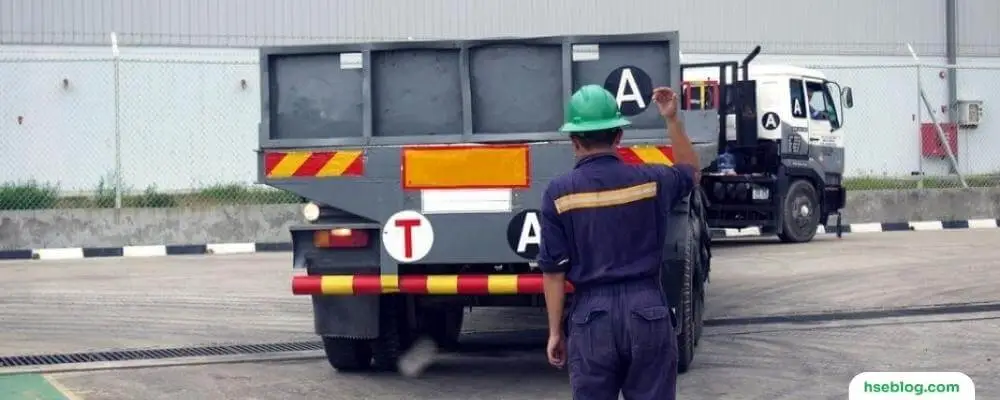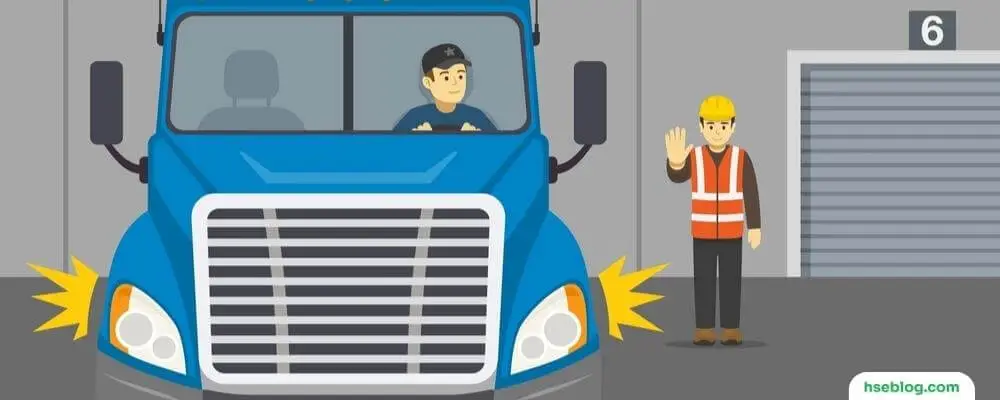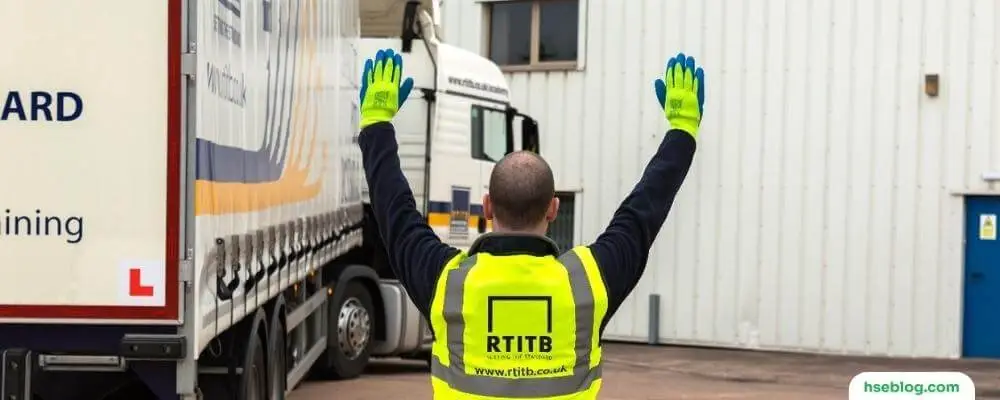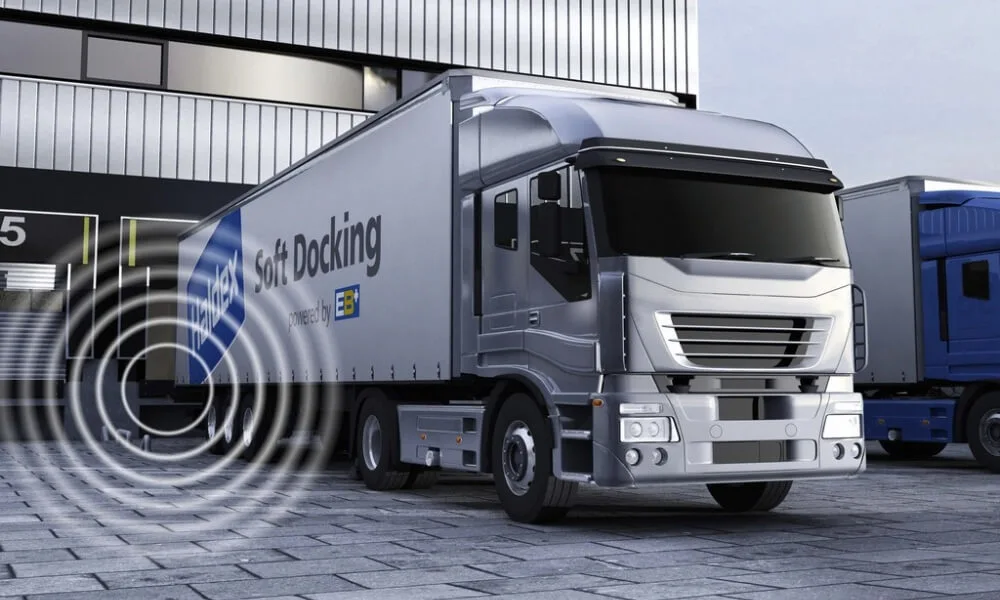Accidents caused by reversing vehicles are a critical issue leading to injuries and fatalities, marking an unfortunate yet avoidable blot on our road safety records. With the frequency of such accidents alarming, it’s essential for drivers and pedestrians alike to understand the gravity of this matter. Welcome to our blog post, “Reversing Hazards: Safety Tips to Prevent Vehicle Accidents.” This piece aims to illuminate the danger lurking in an often overlooked driving maneuver – reversing.
This blog will discuss comprehensive safety rules and preventive measures to curb reversing accidents. From simple adjustments to comprehensive training, we aim to provide safety tips to help make reversing a safer maneuver for everyone involved, reducing the risk of accidents and enhancing overall road safety. So buckle up with these potentially life-saving tips as we drive into a safer future!
Common Reversing Vehicles Hazards
Reversing vehicles poses several hazards, particularly when executed without proper precautions. Here are some common reversing vehicle hazards:
- Site Layout: The layout of a site can significantly impact the ease and safety of reversing vehicles. Narrow lanes, sharp corners, or congested parking areas make reversing maneuvers more difficult and increase the risk of collisions.
- Blind Spots: Every vehicle has blind spots – areas not visible through rear-view mirrors. When drivers can’t see what’s directly behind them, they risk reversing into objects, other vehicles, or pedestrians. The size and shape of these blind spots vary depending on the vehicle’s make and model.
- Pedestrians and Other Vehicles: Pedestrians, cyclists, and other vehicles pose a significant hazard when a vehicle reverses. The driver might not see someone walking behind the vehicle or another vehicle moving toward its path. Furthermore, pedestrians and other drivers may not always predict that a vehicle is about to reverse, leading to potential collisions.
- Lack of Space: In confined spaces such as tight parking lots or busy construction sites, there’s less room for error when reversing. A slight miscalculation or misjudgment in such settings can lead to an accident.
- Lack of Lighting: Poor lighting conditions can make reversing a hazardous task. If a driver cannot clearly see their surroundings due to inadequate lighting, they are at a greater risk of hitting objects, people, or other vehicles when reversing.
- Faulty Safety Equipment: Safety equipment such as reverse cameras, parking sensors, and audible reversing alarms help to mitigate reversing hazards. However, if this equipment is faulty or non-functional, the risk of accidents increases significantly. Regular checks and maintenance of safety equipment are crucial to ensure their effectiveness.
- Limited Visibility: Drivers often struggle with limited visibility when reversing. This is especially true for larger vehicles where blind spots are more significant. Even in smaller vehicles, items such as parked cars, fences, and pedestrians can be difficult to see.
- Pedestrian Safety: Pedestrians are particularly vulnerable to reversing vehicles. This is because they can easily fall into the driver’s blind spot. Children are especially at risk as their height makes them harder to spot from a reversing vehicle.
- Property Damage: In addition to posing a threat to pedestrians, reversing vehicles also poses a risk to property. This could be other vehicles in a car park or structures such as fences and walls.
- Worker Safety: In work environments, such as construction sites or warehouses, reversing vehicles can pose a significant risk to worker safety.
- Speed: Reversing too quickly increases the risk of an accident as it reduces the driver’s reaction time if an obstacle is identified.
- Distraction: Driver distraction is a leading cause of reversing accidents. This could be due to mobile phone use, eating, drinking, or any other activity that diverts attention from driving.
To mitigate these risks, drivers should adhere to safe reversing practices, such as those outlined in the safety tips above. These include implementing one-way traffic systems, segregating pedestrians and vehicles, selecting vehicles with good rear visibility, using audible reversing alarms, setting up mirrors to eliminate blind spots, wearing high-visibility clothing, ensuring proper lighting, employing banksmen for guidance, and training drivers and pedestrians.

10 Vehicle Reversing Safety Tips To Follow To Prevent Accidents
Driving in reverse requires a high degree of concentration and can often lead to accidents if not done correctly. Here are 10 safety tips to help prevent accidents when reversing a vehicle:
1. Creating a One-Way Traffic System Wherever Possible
Creating a one-way traffic system involves strategically designing parking lots, driveways, or even larger facilities like warehouses and work sites to allow vehicles to move in a singular, continuous direction. This design eliminates the necessity for vehicles to reverse to exit. In a one-way system, parking spaces are arranged at an angle (often diagonally), allowing drivers to easily pull into and out of spaces without reversing.
The key benefit here is that the drivers no longer have to contend with the difficulties of accurately estimating distances when reversing, a common cause of accidents. This arrangement also enhances the overall traffic flow, reduces congestion, and improves efficiency, as drivers no longer wait for others to complete complex reversing maneuvers. Therefore, where possible, implementing a one-way traffic system is a proactive approach to reducing and reversing accidents, contributing to a safer driving environment for everyone.
2. Segregating Pedestrians and Vehicles & Providing Safe Areas
Establishing clear separation zones between pedestrian and vehicle areas is a crucial strategy for preventing reversing accidents. This segregation could be pedestrian walkways or marked pathways in parking lots, driveways, or workplaces where heavy vehicles operate. The marked zones serve as visual cues for drivers and pedestrians, reminding drivers to be cautious and directing pedestrians away from potentially dangerous areas.
Additionally, designating safe refuge areas, especially in high-traffic areas, is another effective measure. These are areas where pedestrians can safely stand or wait while vehicles are reversing or passing by. These could be physical structures like raised platforms, barriers, or simply marked zones that are clearly visible. With segregation and refuge areas in place, the risk of pedestrians unknowingly stepping into the path of a reversing vehicle is greatly reduced, making shared spaces safer for everyone.
3. Choosing Vehicles with Good Rear Visibility
Vehicle design significantly impacts rear visibility, a vital factor to consider when purchasing or leasing a vehicle, especially for individuals who frequently drive in urban environments or crowded areas where reversing is a common maneuver. Vehicles with large rear windows offer an extensive view of the area behind the car, making it easier for drivers to see obstacles, pedestrians, or other vehicles when backing up. A high driver’s seat position enhances this view, providing a more comprehensive look at the surroundings.
Conversely, vehicles with thick rear pillars or small rear windows may obstruct this view, leading to blind spots. Blind spots are areas around your vehicle that are not visible through the mirrors or direct line of sight, increasing the risk of accidents during reversing. Therefore, selecting a vehicle with good rear visibility can greatly enhance your ability to see what’s behind you, making reversing maneuvers safer and more secure.
4. Installing Audible Reversing Alarms and Flashing Beacons
Audible reversing alarms and flashing beacons are valuable safety additions to any vehicle that frequently operates in areas populated with pedestrians, cyclists, or other vehicles. An audible reversing alarm emits a loud, distinct sound that alerts individuals nearby that the vehicle is about to move backward. This is particularly useful in noisy environments where the usual sound of the engine may not be enough to alert those nearby.
Similarly, flashing beacons provide a visual cue, usually a brightly colored light that blinks steadily when the vehicle is in reverse. These beacons are especially effective in low-light situations or busy areas where multiple activities might distract a pedestrian’s attention. Both these features act as an additional layer of communication between the driver and the surrounding environment, providing a clear warning that the vehicle is about to reverse, allowing those nearby ample time to steer clear of its path. Consequently, installing audible reversing alarms and flashing beacons can significantly mitigate the risk of reversing accidents.

5. Setting Up Mirrors to Eliminate Blind Spots
Blind spots – areas around the vehicle that the driver can’t see directly from the driver’s seat or via mirrors – are common in all vehicles. They become even more problematic when reversing since the driver must rely heavily on the rearview and side mirrors. Therefore, setting up additional mirrors or utilizing blind-spot detection systems can be a game-changing solution to this problem.
Additional mirrors, such as wide-angle mirrors, can be installed to give a broader view of the area behind and to the sides of the vehicle. They expand the field of vision and help the driver see any approaching pedestrians, obstacles, or other vehicles that may not be visible in standard mirrors.
On the other hand, blind-spot detection systems are advanced safety technologies that use sensors to monitor areas the driver can’t easily see. If these systems detect an object in the blind spot, they alert the driver with a visual warning on the side mirror or an audible alert. This helps the driver know when to reverse or change lanes, reducing the risk of accidents. By effectively eliminating blind spots, these measures greatly enhance safety while reversing.
6. Encouraging the Use of High-Visibility Clothing
High-visibility clothing can be a lifesaver in environments where vehicles frequently operate near pedestrians or workers, such as construction sites, warehouses, or loading docks. High-visibility clothing, often brightly colored and with reflective materials, makes the wearer significantly more noticeable, even in low light or poor weather conditions.
The vibrant colors contrast sharply with most industrial or outdoor environments, and the reflective materials shine brightly when illuminated by a vehicle’s headlights. This increased visibility allows drivers to detect and react to the presence of pedestrians or workers from a distance, reducing the likelihood of collisions.
Additionally, high-visibility clothing can also aid communication among team members in busy or noisy environments. High-visibility clothing is an effective and straightforward strategy to mitigate the risk of reversing accidents by significantly enhancing the visibility of individuals in the vicinity of reversing vehicles.
7. Ensuring Proper Lighting
Ensuring appropriate lighting is a fundamental safety measure that greatly aids in reducing reversing accidents, especially during nighttime or in poor weather conditions. Proper lighting significantly improves visibility, allowing drivers to see their surroundings while reversing. Well-lit areas help drivers identify pedestrians, obstacles, and other vehicles that could be in their path. It also alerts pedestrians of an approaching vehicle, allowing them to move out of the way in time.
For example, having high-quality, bright lighting in parking areas, driveways, and worksites increases the area’s visibility to drivers and makes the area safer for pedestrians. Therefore, whether it’s installing better lights in your garage, parking lot, or workplace, or using the vehicle’s reversing lights effectively, ensuring a well-lit area is vital in preventing accidents associated with reversing vehicles.
8. Employing Banksmen for Guidance
Employing a banksman often referred to as a traffic marshal, can be an incredibly effective safety measure for preventing reversing accidents, particularly in busy or congested areas. A banksman is a trained individual responsible for directing vehicle movements in areas not visible to the driver. They communicate with the driver through established hand signals to guide them safely while reversing.
Banksmen serve multiple roles: they help guide the vehicle around obstacles, provide a visible warning to other road users of the reversing vehicle, and ensure that pedestrians and cyclists stay clear of its path. They act as the ‘eyes’ for the driver in places the driver cannot see, ensuring no one is in danger when the vehicle reverses. By carefully monitoring the surroundings and providing precise guidance to the driver, a banksman can greatly reduce the risk of accidents associated with reversing vehicles, ensuring the safety of both the vehicle driver and those in the immediate area.
9. Implementing Training Programs for Drivers and Pedestrians
Implementing comprehensive training programs for drivers and pedestrians can play a significant role in mitigating and reversing accidents. For drivers, these sessions can help them understand and follow safe reversing procedures, including proper mirror usage, understanding vehicle blind spots, and making the most of the latest safety features their vehicles may possess. Regular practice under supervision can help drivers improve their judgment of distance and awareness of surroundings, significantly reducing the risk of accidents.
For pedestrians and cyclists, especially those who frequent areas with heavy vehicle traffic, educational programs can instill better awareness of the dangers of reversing vehicles and provide guidelines for safely navigating around them. Training can also teach them to recognize the audible and visual signals of reversing vehicles and react appropriately.
Along with training, clear signage and markings in high-risk areas can constantly remind everyone to stay vigilant. Signages indicating ‘Reversing Area,’ ‘Pedestrians Prohibited,’ or ‘Vehicle Movement Area’ can remind drivers and pedestrians to exercise caution. Ultimately, knowledge, awareness, and continuous adherence to safety practices are key to preventing reversing vehicle accidents.

10. Use of Reversing Cameras and Sensors
In recent years, technological advancements have provided another layer of safety for reversing vehicles. Reversing cameras give drivers a clear view of what’s directly behind their vehicle, something rearview mirrors can’t provide. Similarly, parking sensors can alert drivers to obstacles behind their vehicles with increasing urgency as the vehicle gets closer.
These tools can greatly assist in safely maneuvering a vehicle in reverse, especially in tight parking situations or places where children or pedestrians might be present. Investing in such technology could be a valuable step toward preventing and reversing accidents.
Conclusion
Reversing a vehicle brings inherent risks, especially without due care and consideration. However, we can significantly reduce the likelihood of accidents by understanding these hazards and implementing the safety rules and precautions we’ve discussed. It’s essential to remember that safety is a shared responsibility, and all road users – drivers, pedestrians, and cyclists – play a vital role in ensuring safe coexistence on our roads.
Every step counts towards a safer environment, from choosing vehicles with excellent rear visibility to implementing training programs. Let’s ensure we value each life on our roads by exercising caution, fostering awareness, and embracing the right safety measures when reversing vehicles. After all, every accident prevented is a step closer to safer roads and a safer community. Stay safe and drive responsibly!

